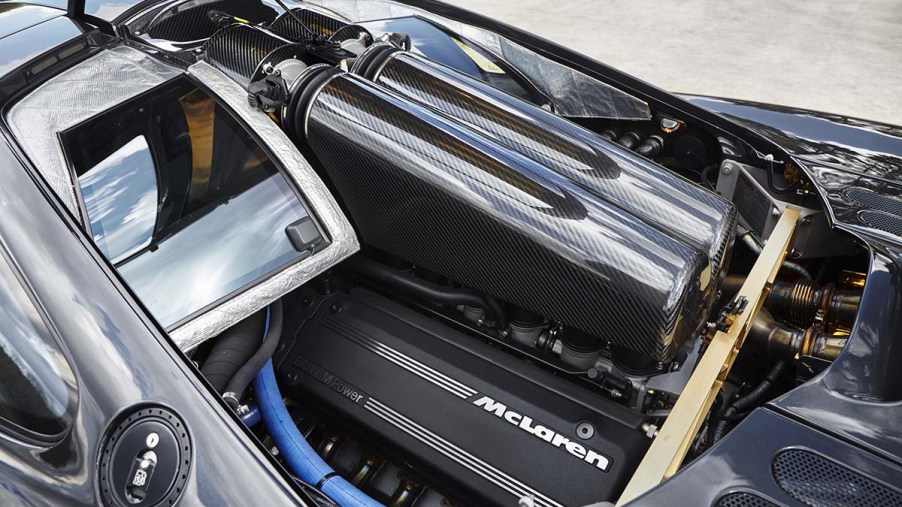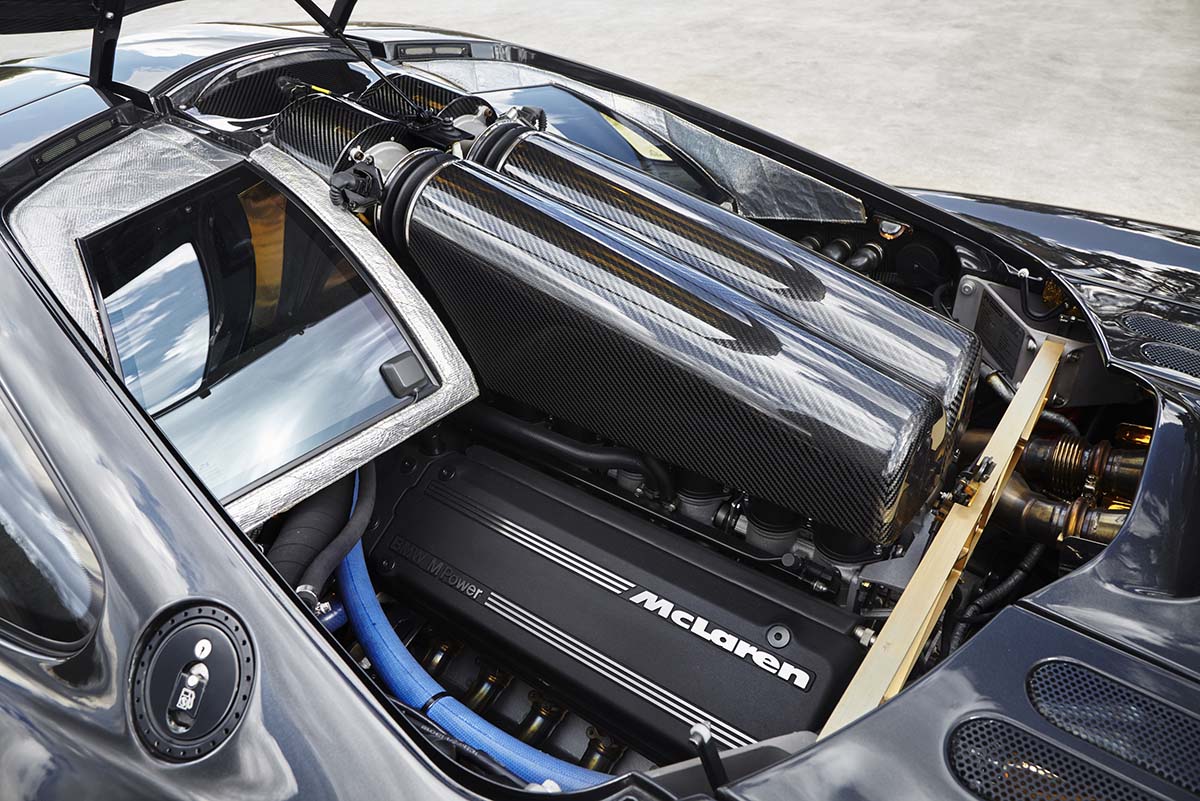
McLaren F1 Engine Detail Means It’s Still the Fastest Car in the World
It’s completely safe to call the McLaren F1 timeless. Whether in reference to its performance or styling, you’d be correct. At the time of its release, the McLaren F1 was the fastest car in the world. Though that title has long since gone to the likes of Bugatti and Hennessey, one technicality means the McLaren F1 is still the fastest car in the world. Unlike most modern supercars and hypercars, the McLaren F1 engine is naturally aspirated.
What does naturally aspirated mean?

McLaren did not build the F1 engine. Surprise! The company sourced the engine from BMW. Effectively, the McLaren F1’s V12 engine, known as the S70/2, is an extreme performance variant of the M70 engine you’d find in some 7 series models. It was, however, specifically designed for McLaren. According to TopSpeed, this engine makes the McLaren F1 the fastest naturally aspirated production car to this very day.
Though most manufacturers today (and even a healthy dose of them back in the ‘90s) lean into forced induction like a turbocharger or supercharger to generate power, the S70/2 does not. Instead, it uses pure brute force of displacement, cylinder count, and world-class engineering to pump out 618 horsepower and 479 pound-feet of torque. In case you didn’t get it, the absence of forced induction means an engine is naturally aspirated.
The McLaren F1 engine uses technology that, at the time, was virtually unheard of on roadgoing cars. The carbon fiber intake manifold and individual throttle bodies were something straight out of Formula One. According to Auto Evolution, the S70/2 used exclusive cylinder heads, two injectors per cylinder, and an 11:1 compression ratio to maximize efficiency and power output.
So far, no naturally aspirated cars have outdone the McLaren F1
Just a few short years after the McLaren F1 took the world by storm, the Mercedes GLK GTR Super Sport took to the roads. It nearly beat the F1 at its naturally aspirated game, too.
Like the McLaren F1, the CLK GTR Super Sport has a naturally aspirated V12 engine. However, this 7.3-liter Mercedes powerplant outputs 655 horsepower. Like the F1, it shares the chassis with a six-speed manual transmission. Its 231 MPH top speed puts it in second place by less than 10 miles per hour.
Other entrants like the Lamborghini Veneno, Ferrari FF, and Aston Martin One-77 have come close, too. Overall, though, the McLaren F1 still remains the fastest naturally aspirated car in the world. Furthermore, with engine technology advancing toward turbochargers and electric motors on the rise, the F1 may just hold that title for all of time.



